
Executive Summary
We’d like to thank all of you who shared your perspective on OpenNebula as part of our 2018 Architecture Survey. This is the fourth architectural survey of OpenNebula since 2012, and the results were collected during the period of December 4, 2018 through January 11, 2019. Your participation here is fundamental to our strategic focus to best provide features and support that align with the infrastructures platforms and configurations demanded by you.
We have only included in the analysis the respondents that are using OpenNebula 5.x (latest series) and who we deem reliable because they have provided identification details that allow us to verify the answers of the survey. This is important given that our main aim is to have accurate and useful information about OpenNebula deployments. This survey is not a market survey and does not express all OpenNebula deployments worldwide.
The data provided helps to shed light on how OpenNebula is being used by the community, as well as providing some indicators of where to aim for the future. In comparing to our previous survey taken in 2015, there are some other notable findings:
- The types of workloads handled by OpenNebula is evolving, with a growing proportion (85%) of them being run in a Production environment, while also having others running in Dev/Test (73%) and in a Proof of Concept mode (29%). OpenNebula shows its increasing maturity, compared with 73% of deployments in production reported in our previous survey.
- A few other indicators of its developing stability are both the Number of Users supported by OpenNebula clouds, as well as the Number of Nodes. For each of these metrics, there has been steady growth across the board.
- The growth in user count for OpenNebula clouds has progressively increased with now close to 20% servicing more than 1,000 users. Smaller OpenNebula clouds, of 100 users or less, now constitute 45%, which is down from 70% in 2015.
- And “node count” has seen steady growth as well, with 77% of cloud environments having more than 10 nodes, (up from 56% in 2015). Similarly, we see that 29% of cloud environments have more than 100 nodes, where in 2015 that figure was 20%.
- Usage of OpenNebula in Commercial and Industrial enterprises continues to grow. Its employment in organizations across various industries shows a growing distribution with increasing usage in IT, Telecommunications and Internet, and Hosting and MSP’s, and Media and Gaming sectors – mounting to 75% of total usage. And while still an important sector of OpenNebula usage, Academia and Research constitutes a smaller percentage of the overall – now 14%, down from 25% in our last survey.
- Hybrid cloud usage continues to grow, with an increasing percentage of OpenNebula integration with AWS (39%), as well as with Microsoft Azure (22%).
- With the advent of Configuration Management and Remote Execution tools, we see that a hefty segment of OpenNebula users (73%) are taking advantage of these to introduce automation to their environments.
- A growing usage of CentOS as an Operating System has reached 50% across our survey participants, while usage of both Ubuntu and Debian have remained fairly steady at 42% and 22% respectively.
And OpenNebula continues in its aim to be the simplest and most flexible open source solution for private cloud and data center virtualization management. Our user community rates it highly because of its Simplicity (83%), its Openness (69%) and Flexibility (56%), as well as its Vendor-neutrality (52%).
Thank you again for participating in our survey! Below you can review the detailed results.
A. About the Organization
This year we broke out the demographics across multiple categories, with “Information Technology”, “Cloud Hosting and MSP’s”, and “Telco and Internet” companies assuming large portions of the demographics – but those added together with “Media and Gaming” and “Web, SaaS, and eCommerce” total up to a growing 75% of Industrial/Commercial users. 14% of users work in Science, R&D, and Academia, while just under 11% work for Government and Non-Profits.
Usage by larger companies has steadily grown over time, now reaching 20% of companies with 5,000 employees or more, compared to 13% from our last survey. While smaller companies – (of 500 employees or less) – continue to be avid users of OpenNebula, that demographic constitutes a smaller base of 58%, compared to 64% from our last survey.
48% of deployments are located in Europe or in Russia, a slight shift downward from 50% in our last survey. We also see a small tick upward in growth within North America to 33% from 30%. These two geographic regions continue to lead the usage of OpenNebula by a large margin.
B. About Cloud Usage
The usage of OpenNebula for Production workloads has seen steady growth to 85%, from 73% in 2015. Its use for Development and Testing has remained firm at 73%, while there is significant Proof of Concept work being done, as well (19%).
It is logical that the “On-premise private cloud” remains the most common type of cloud being built with OpenNebula, with 78% of respondents confirming it being part of their cloud infrastructure. However, again the widening types of clouds being created is evident with 54% of users venturing into “Hybrid private clouds”, 55% creating “Federated private clouds”, and 17% and 26% creating “Hosted private clouds” and “Distributed private clouds”, respectively. Even 8% are beginning to venture in creating “Edge private clouds”. With the imminent release of v.5.8 Edge, it will be interesting to see how that last figure grows.
And from a use case perspective, 71% of organizations use OpenNebula for “Data Center Virtualization management”, and 48% use it to establish “Public Clouds, VPS and MSPs”. 39% of users take advantage of OpenNebula to create cloud environments on top of their VMware infrastructure, and 37% are laying the groundwork for Enterprise clouds.
Since 2015, the number of users in most OpenNebula clouds has seen significant growth. Clouds with more than 1,000 users have reached 19% from 8%, while the smaller ones of 100 users or less now constitute 45%, from 70% in 2015.
Another new question we introduced this year had to do with understanding with which other Cloud providers users interact. Amazon Web Services (AWS) is, by far, the most common at 61%, with Microsoft Azure following at 35%.
C. About Cloud Configuration
59% of OpenNebula environments are “federated”, meaning that they have more than a single zone, and 9% are running more than 10 different zones. This is up from 51% and 5%, respectively, from the last time we collected data.
Node count – another metric in measuring cloud size – has steadily increased, as well. 77% of cloud environments have more than 10 nodes, which is a significant increase from 2015 when this measure was 56%. And currently 29% of cloud environments have more than 100 nodes, where in 2015 that figure was 20%.
KVM hypervisors remain the most commonly used hypervisors in OpenNebula environments. Yet, usage with VMware hypervisor continues to be a very solid use-case. The percentage of KVM users has stayed fairly steady, at 75% compared to 73% previously. And usage with VMware hypervisors has increased slightly, at 39% compared to 37%.
56% of users have implemented some form of a “hybrid cloud” in their environment. And the most popular Public cloud providers used in tandem with OpenNebula are Amazon Web Services (AWS) at 39% and Microsoft Azure at 22%. These two were most popular in our last survey, as well, but have increased slightly, where they were 30% and 16% respectively.
Shared datastores at 53% and Ceph at 40% remain the most widely used storage solutions in open environments – while Shared datastore usage dropping slightly from 60%, Ceph has remained the same at 40%. VMware FS at 38% is used in VMware-based deployments, mainly through vCenter, and dropped slightly from 40%.
The most common network configuration is still the Standard Bridged network configuration (40%). 802.1Q VLAN (31%) and Open vSwitch (25%) remain widely-used choices as well, while there has been some movement to VXLAN and OpenSwitch VXLAN with 14% and 10% respectively. And for VMware deployments, we see a steady usage of VMware networking (37%), primarily used through vCenter.
Authentication practices, while shifting slightly to using external authentication systems, have remained fairly static. The majority of deployments use the built-in User/Password authentication (68%), and LDAP, and Active Directory have gained slightly more traction since the last survey with 22%, and 21% usage respectively. SSH, while widely used (42%) has seen a slight drop from 50%.
CentOS and Ubuntu are still the most popular Linux distributions for creating OpenNebula clouds with usage at 48% and 41% respectively, which is a slight upward movement from 44% and 40%. Debian has remained steady at 22% usage.
A new question was introduced to understand what types of configuration management systems are employed to take advantage of automation. The most common platform is Ansible, with 50% usage. Puppet is another popularly used tool, at 29%. There are a few other tools used with some regularity, like Chef (8%) and SaltStack (6%). And 27% of respondents state that they do not use any configuration management system at all.
Similar to the types of configuration management systems, we asked which tools are used to deploy OpenNebula, and the same set of tools lined up in a similar fashion. Ansible is the most-commonly used with 40% usage, and Puppet is used by 21%. Tools like Chef (5%) and SaltStack (4%) have a small user base, while 41% of respondents state that they do not use any deployment tools.
Another question asked inquired about Container or PaaS tools being used to manage applications. While a large part of the respondents (48%) state that they are not yet using these types of tools, for those that are using these types of tools, the most commonly used is Kubernetes with 25% usage. Docker Swarm (14%) and OpenShift (10%) follow in popularity, while 9% of respondents state they are building their own solutions.
When asking about which Advanced Components are used or planning to be used, a large selection of components were confirmed. The most commonly selected was “High Availability” at 65%. Other popular components are “Application Containerization” (47%), “Data Center Federation” (43%), and “OneFlow” (42%). A few others are listed, while 14% state that they are not using or interested in using any advanced components, just yet. https://opennebula.io//opennebulaconf-2016-call-for-speakers-open/”>Call for Speakers is now Open!. If you are a OpenNebula practitioner, user, architect, devop, admin or developer and have something to share, we welcome your submission.
More information is available from the event site. The Conf has already its From a provisioning interface perspective, a large majority of OpenNebula users are taking advantage of the Sunstone interface (82% of users). The CLI and API both have a fairly extensive usage across the community with 41% and 39% respectively, and the Cloud View (Self-Service portal) has 27% of usage.
We inquired about which OpenNebula API’s are being used or planned to be used in the near future, and curiously, a very large constituent (45%) has shown interest in being able to soon utilize Python bindings when v.5.8 is released. Of other API’s currently available at the time of the survey, use or intended use of Ruby bindings is common with 26%, while JAVA and Go bindings follow with 16% and 13% respectively. 29% of users state no current interest in using OpenNebula API’s.
And lastly, as seems to be the case for many years running, “Stability”, “Flexibility”, and “Openness” continue to be the top reasons why users choose OpenNebula.
Thank you again!
Stay connected!

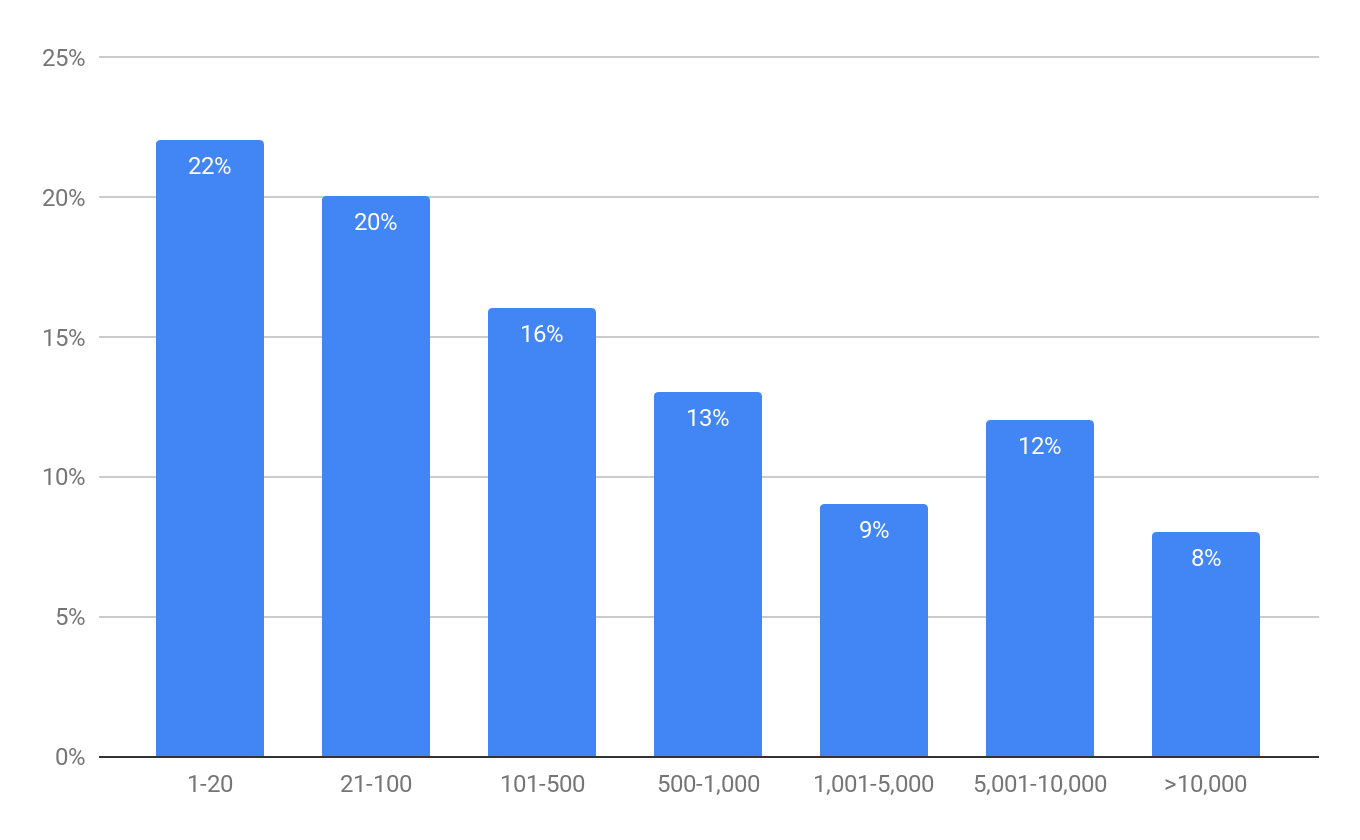
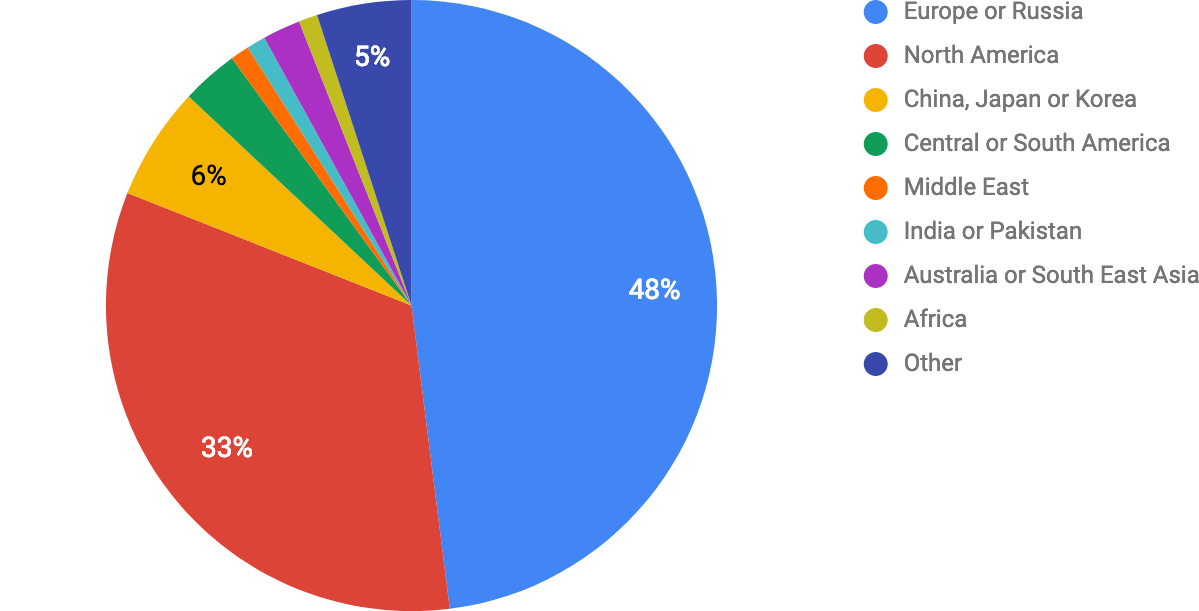
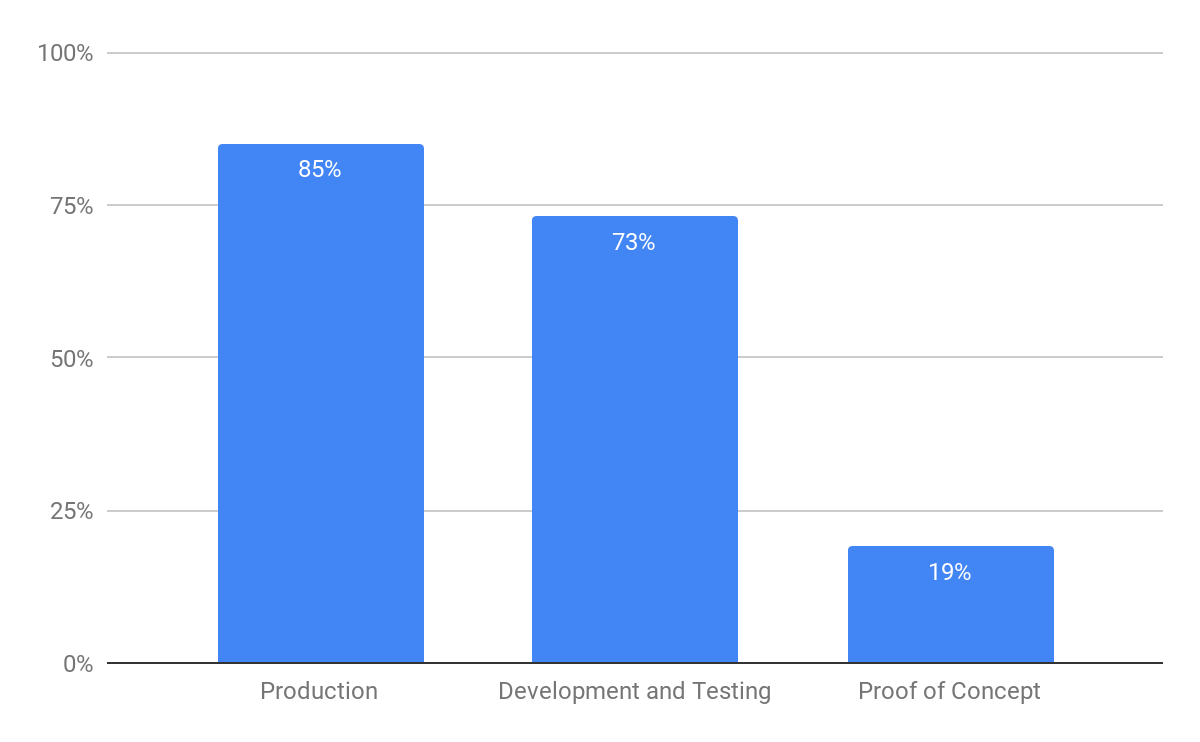
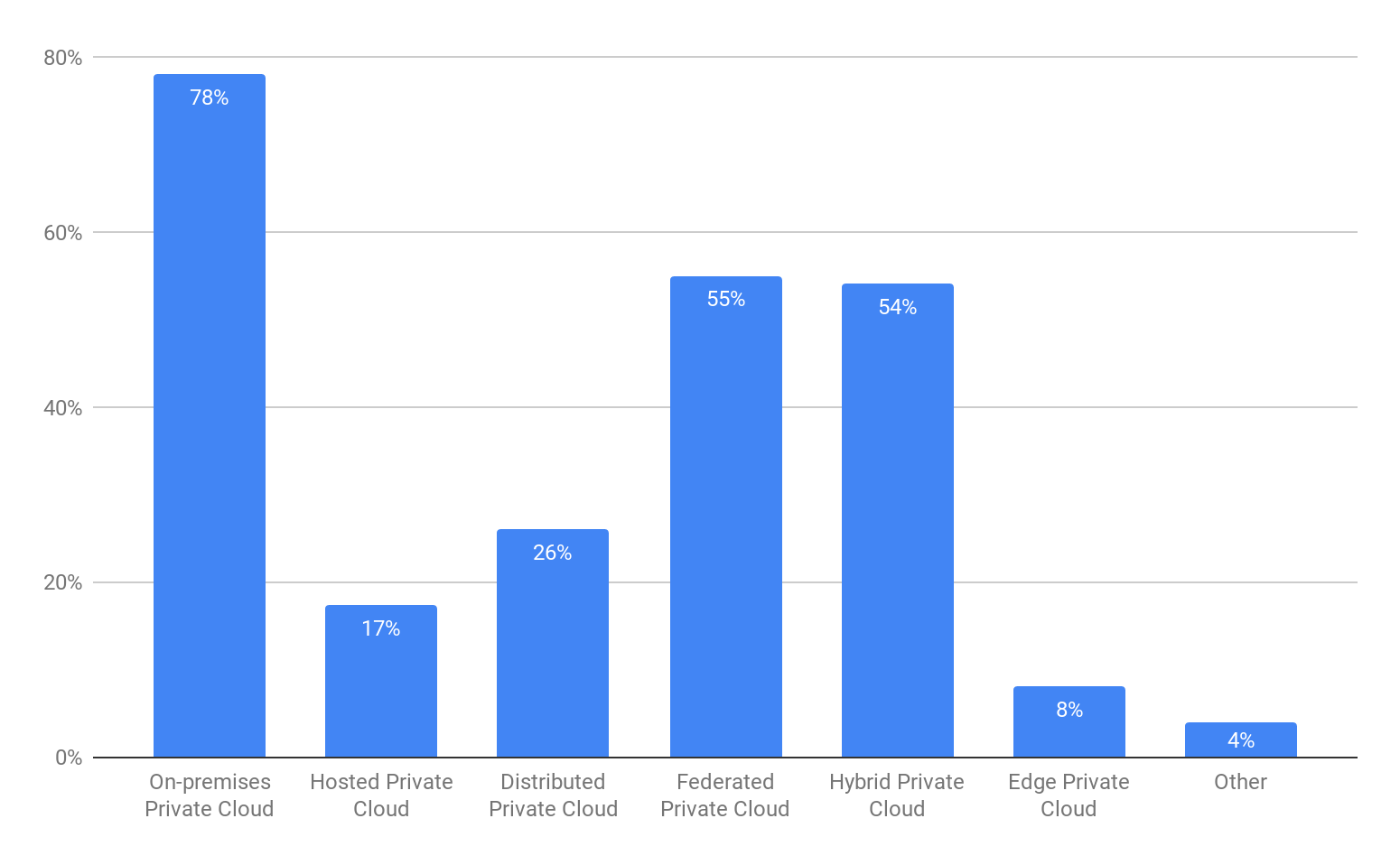
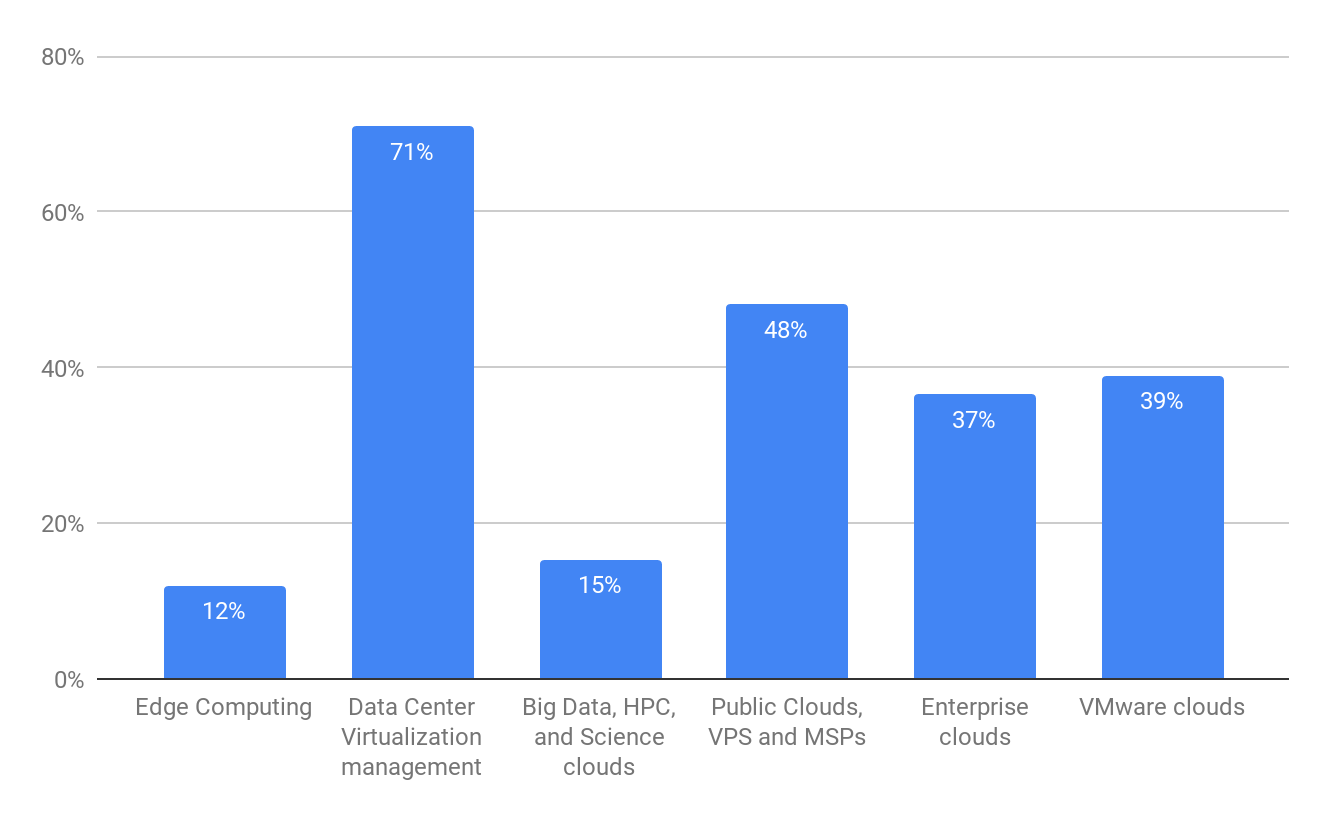



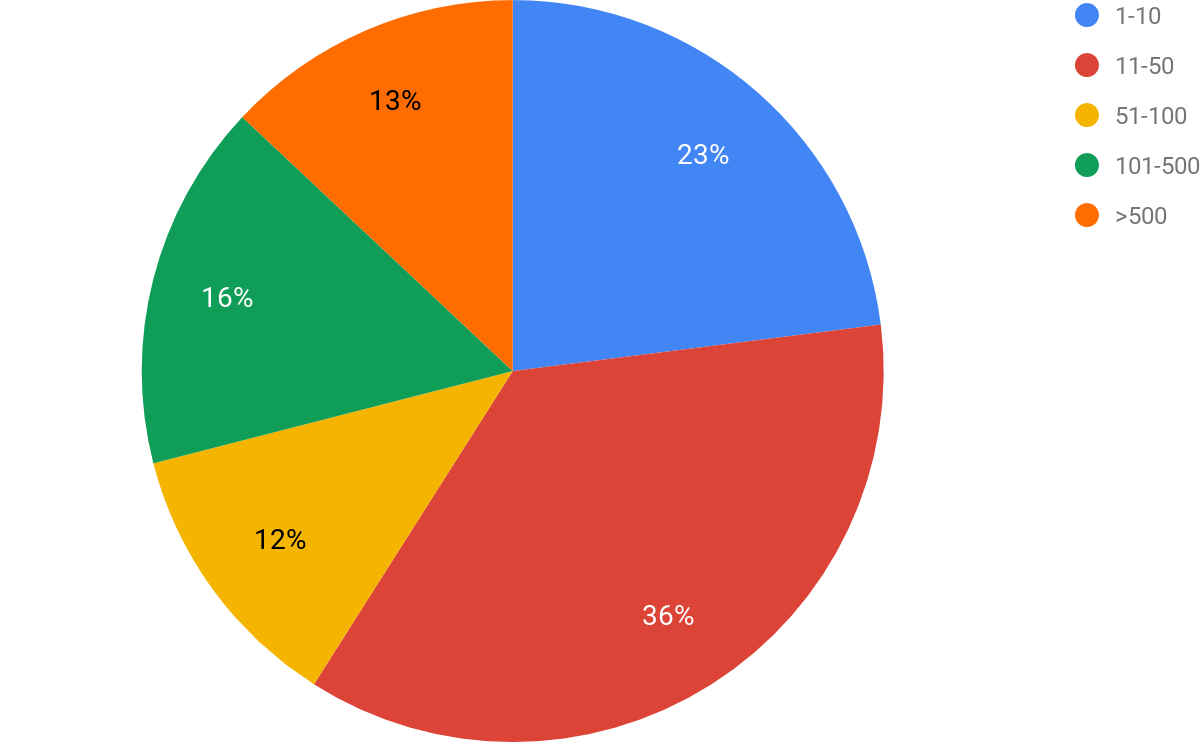
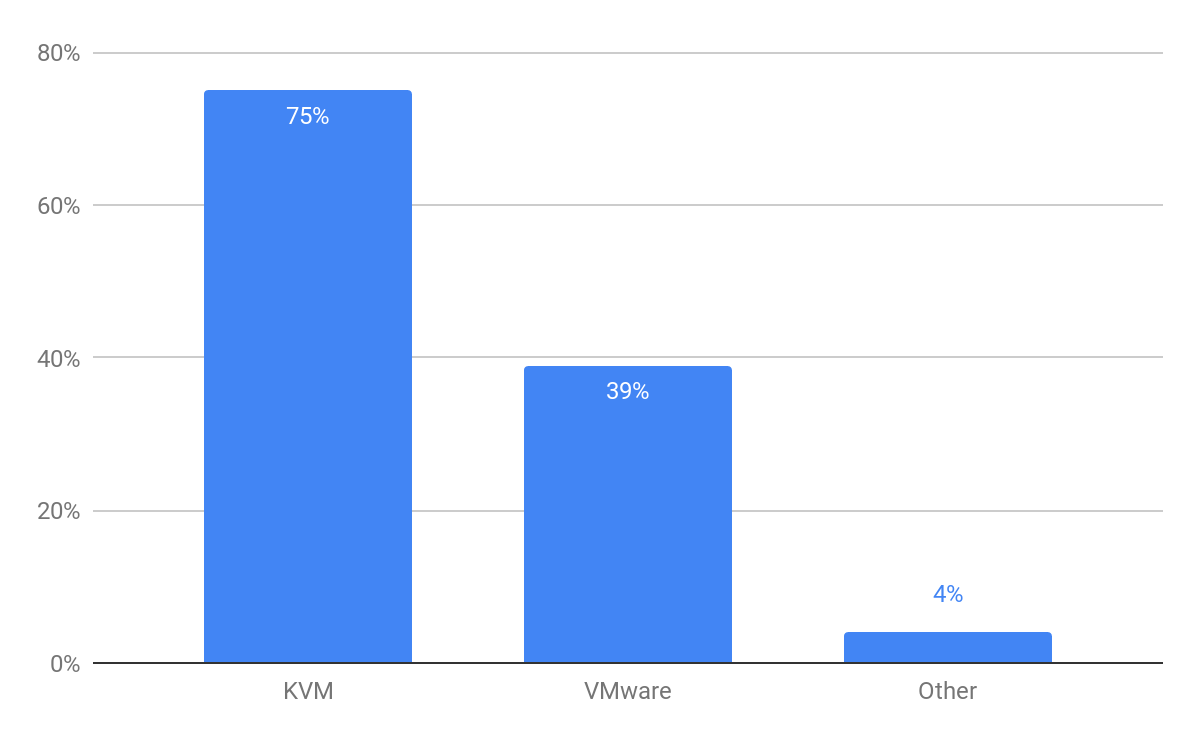
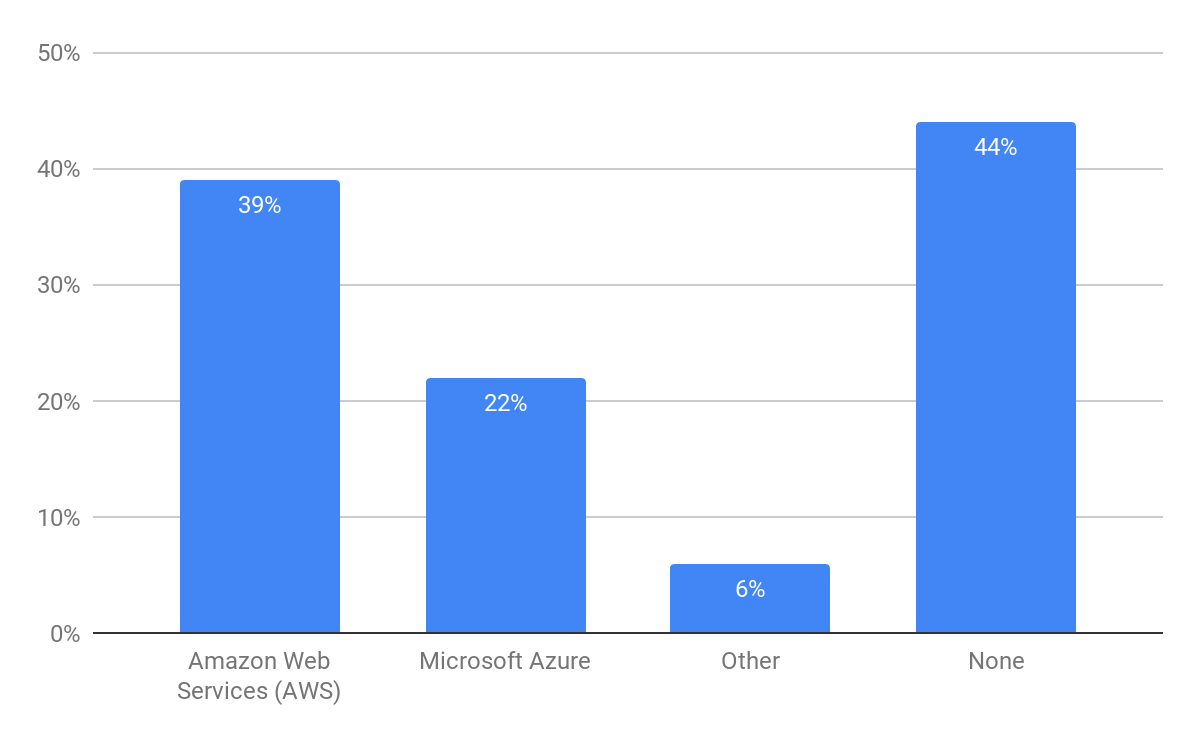
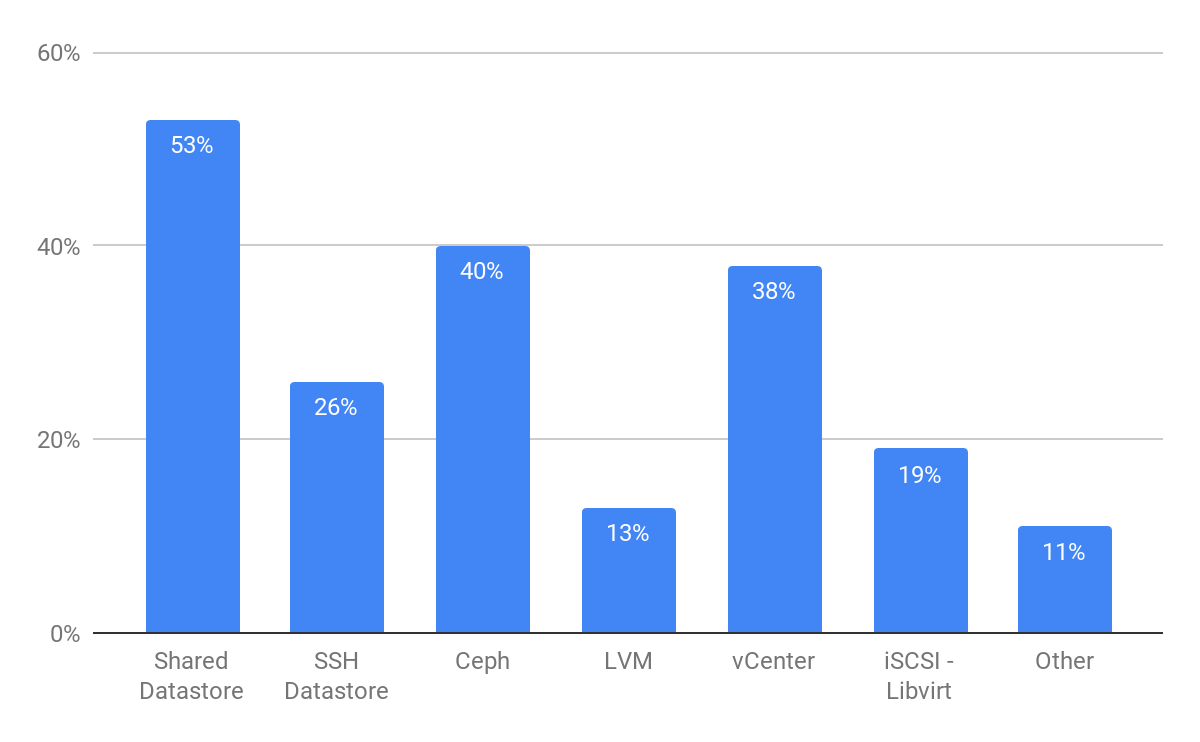
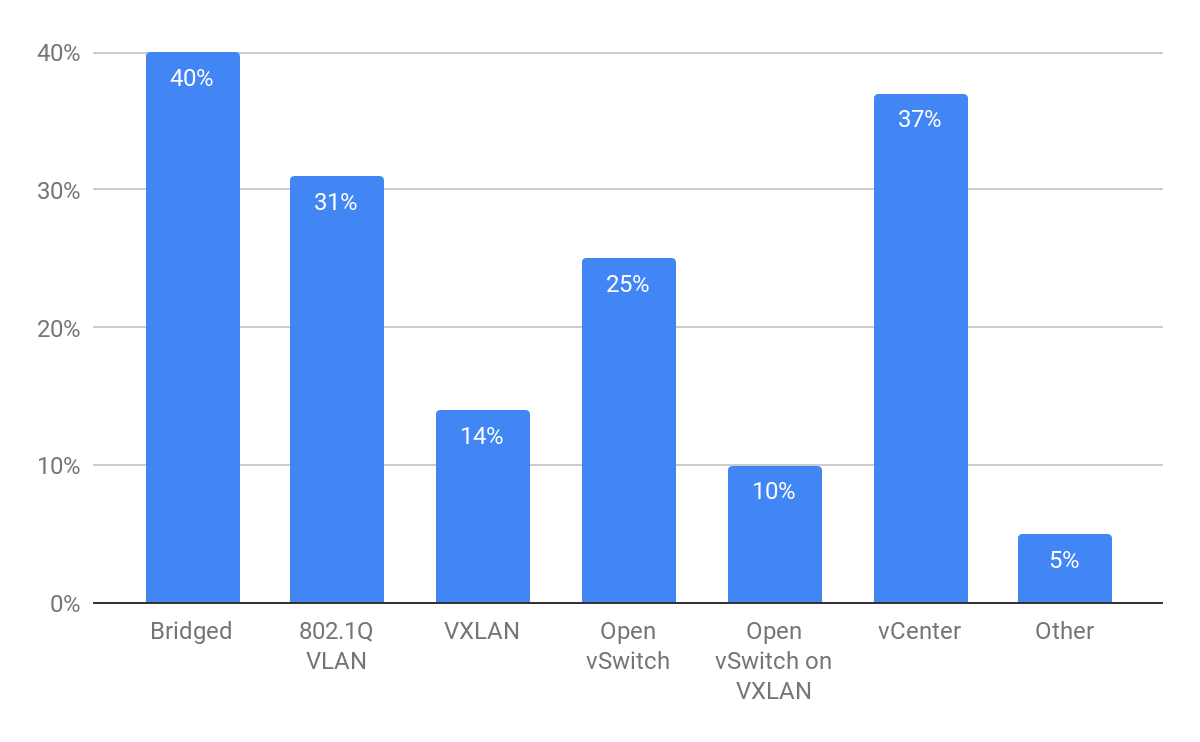
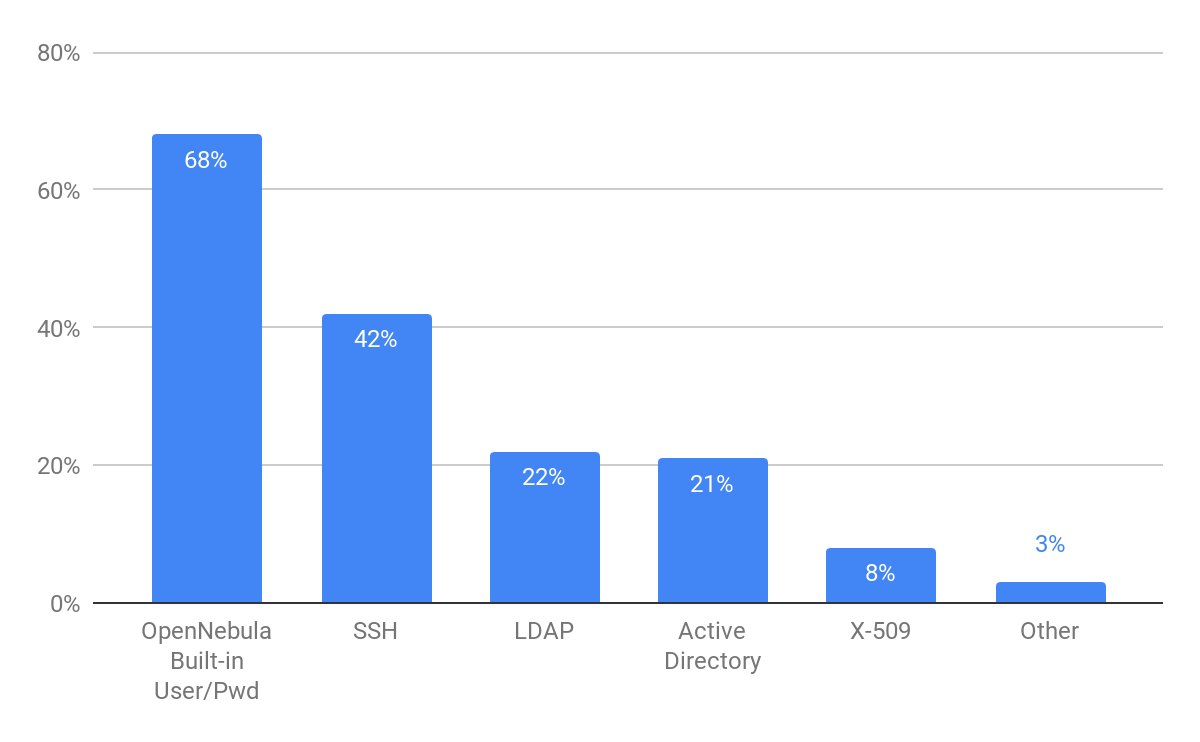

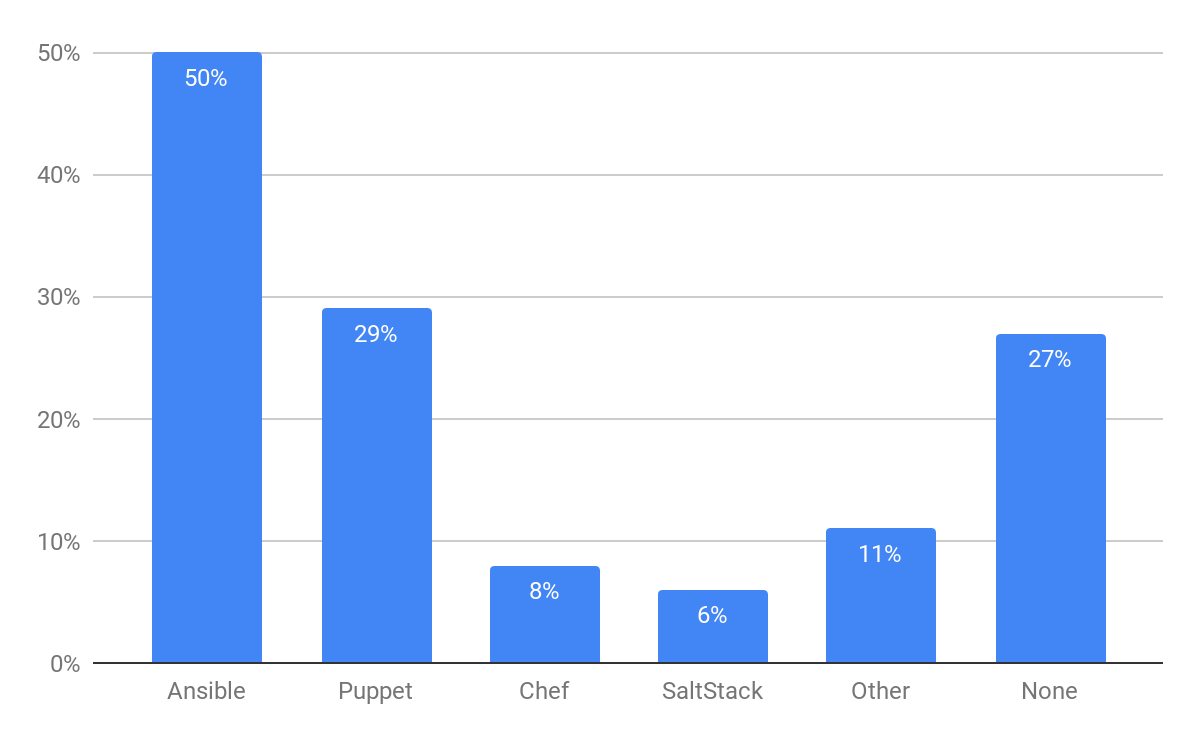
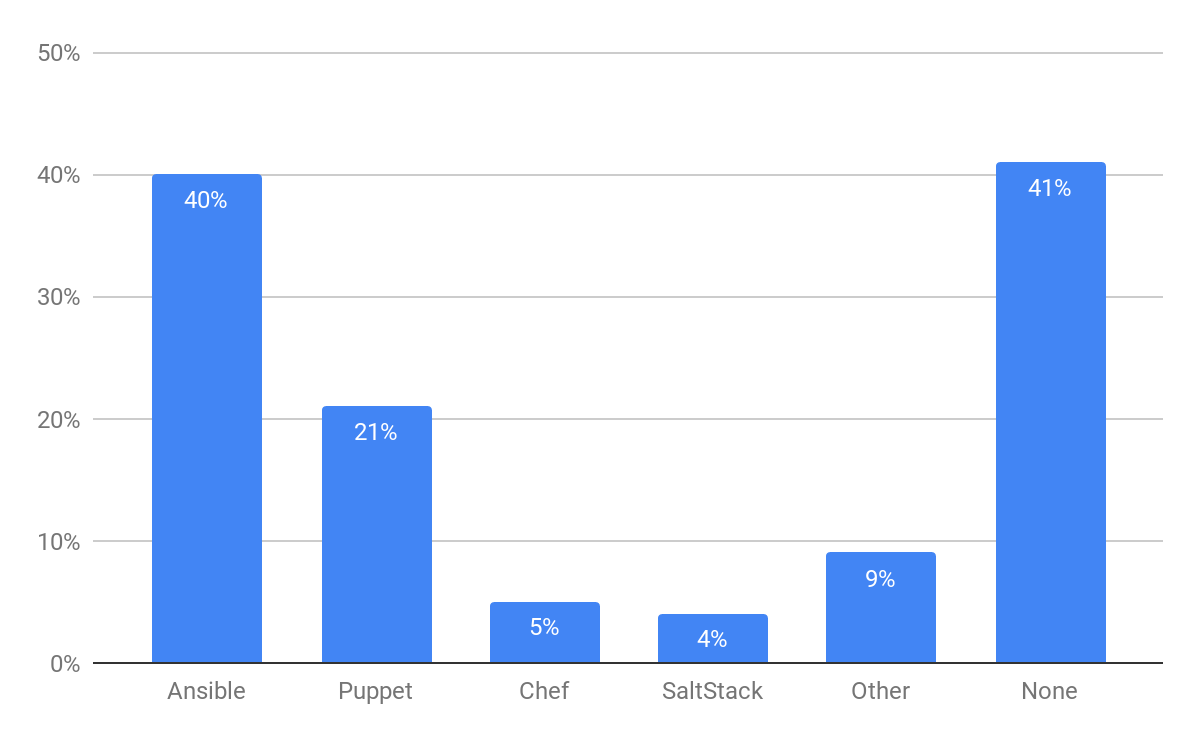
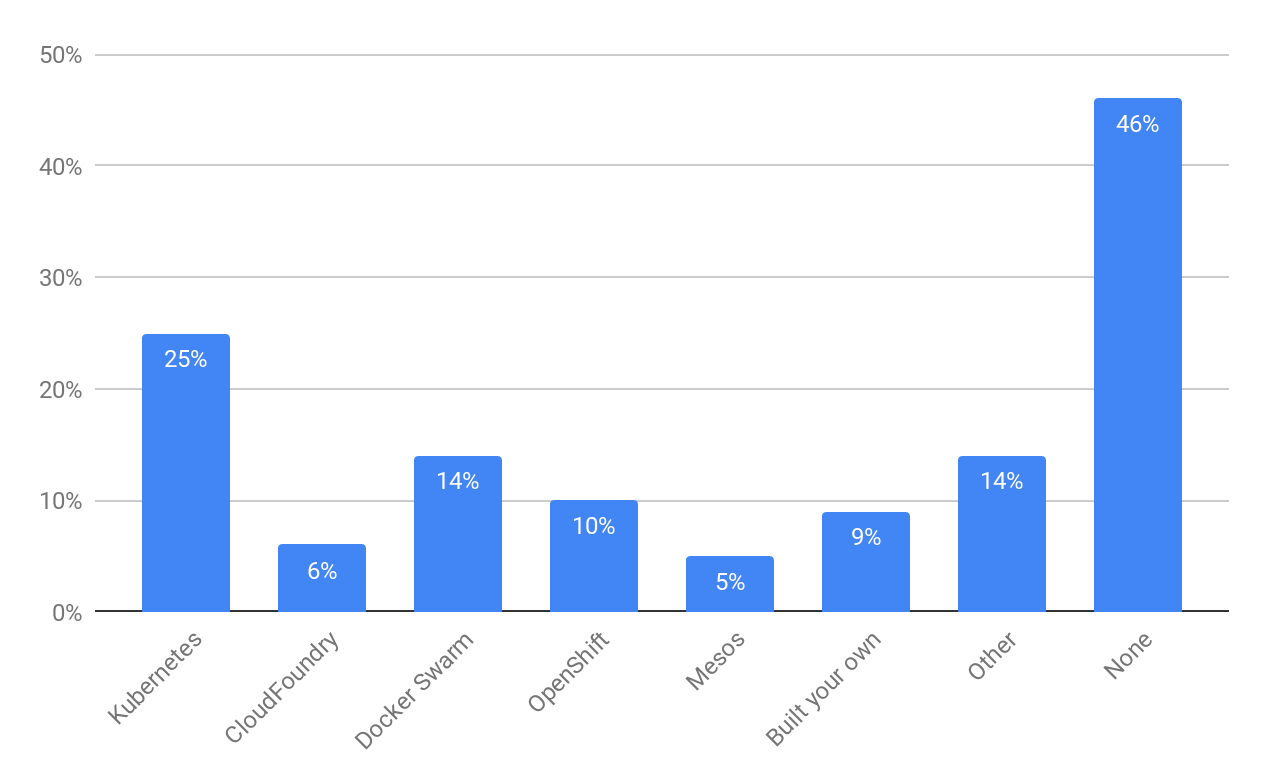

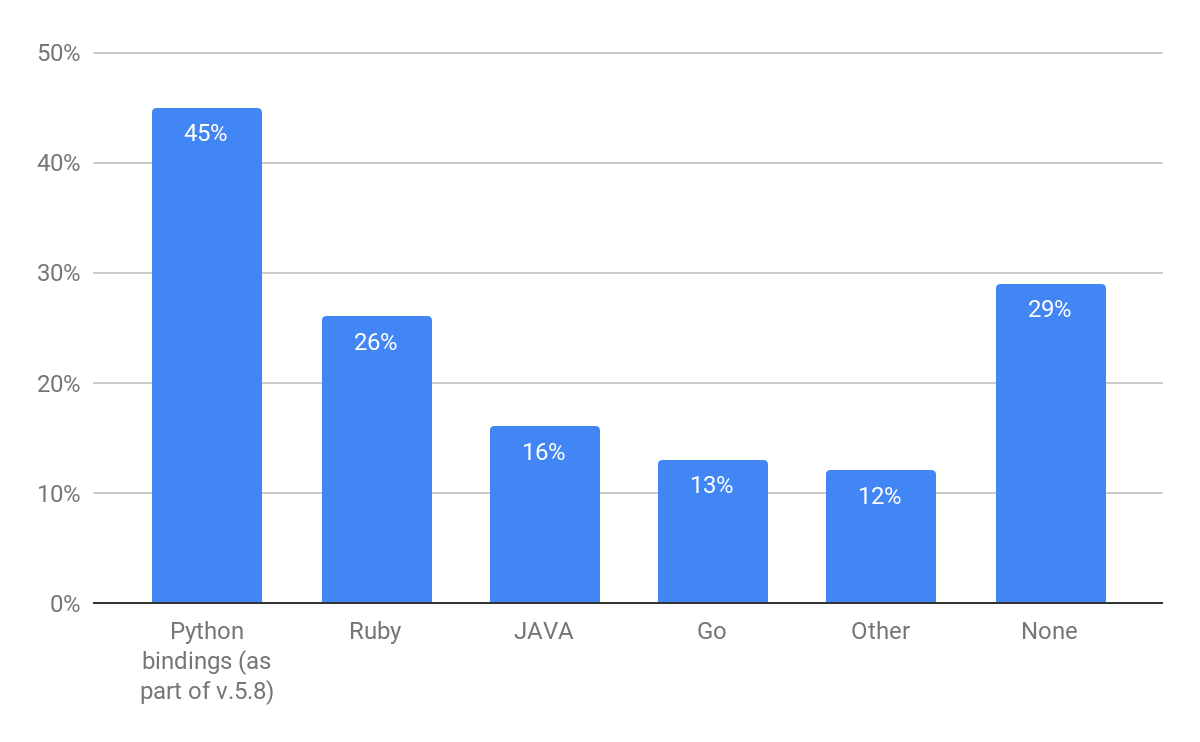
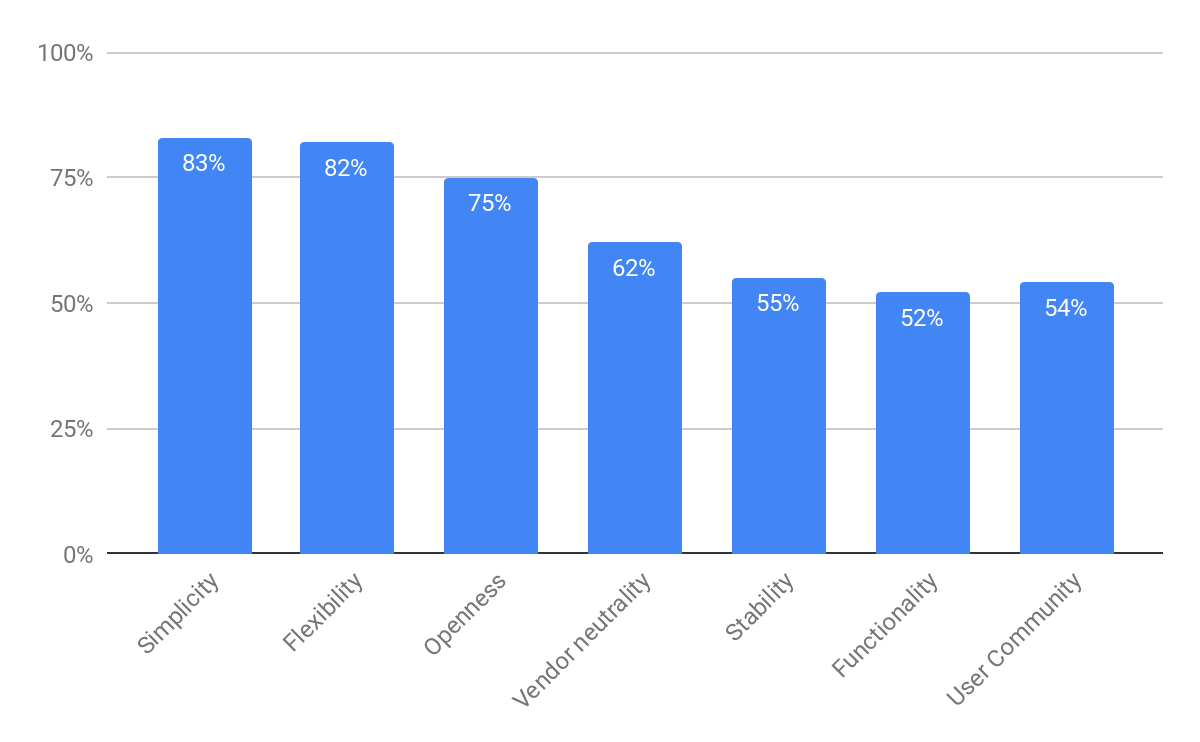
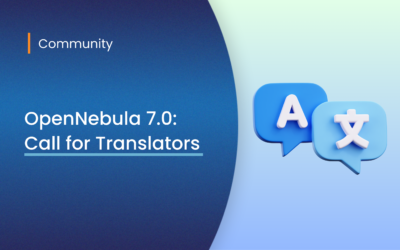

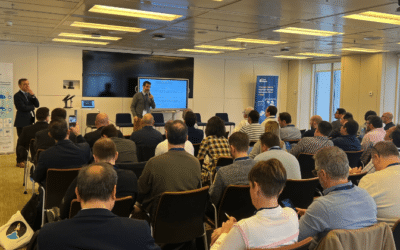
Guys what you are doing is awesome. Looking at your usage survey, I think you can monetize big business usage and use that to fund devs for a/ faster wider adoption by small organizations b/ seamless run and upgrades for medium users c/ whatever they pay for for bigger installations.